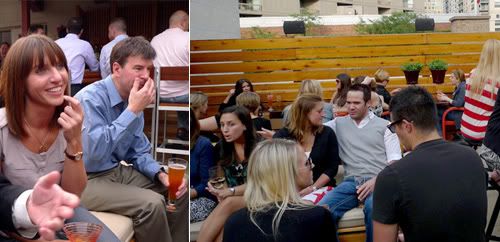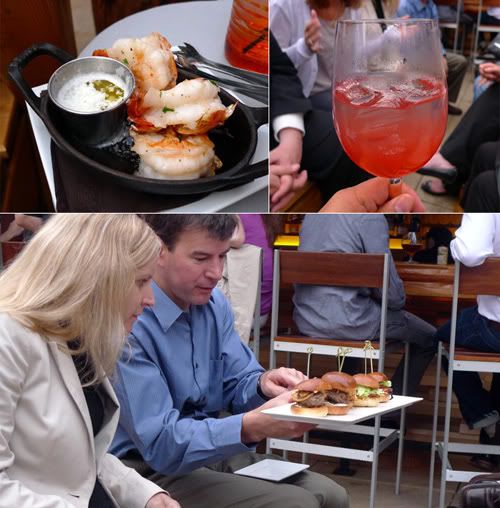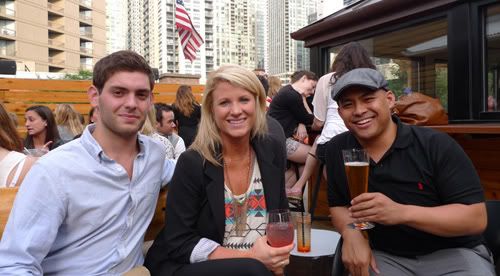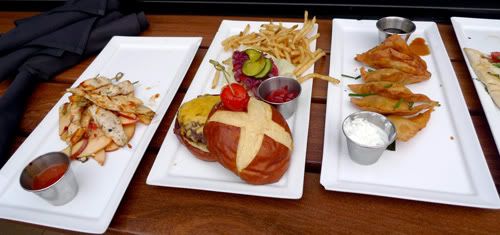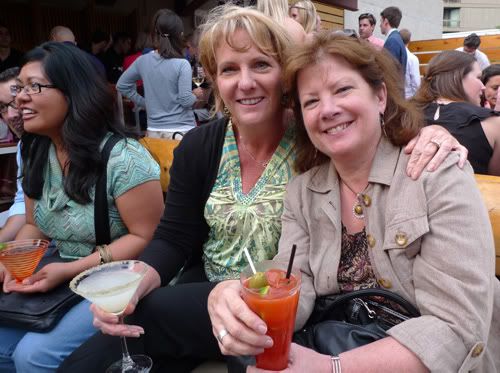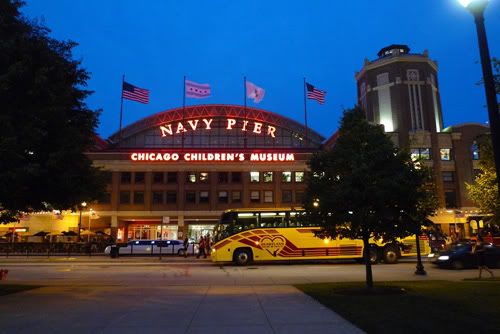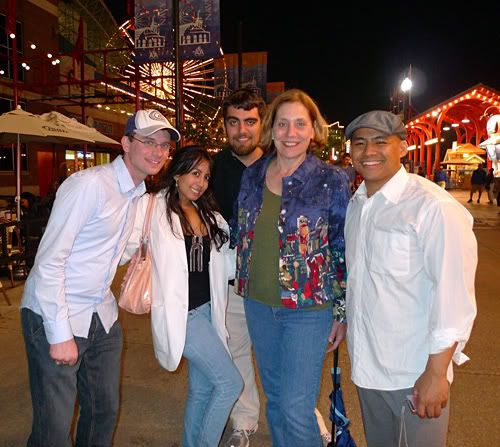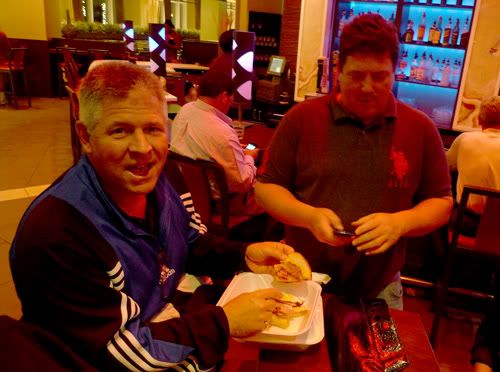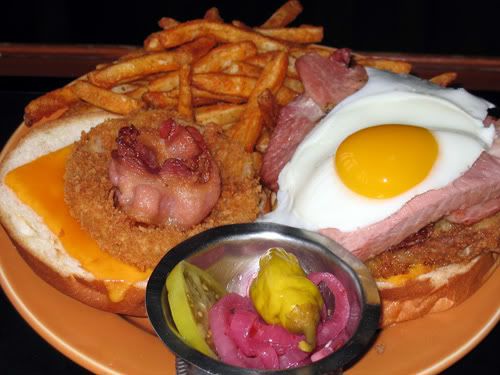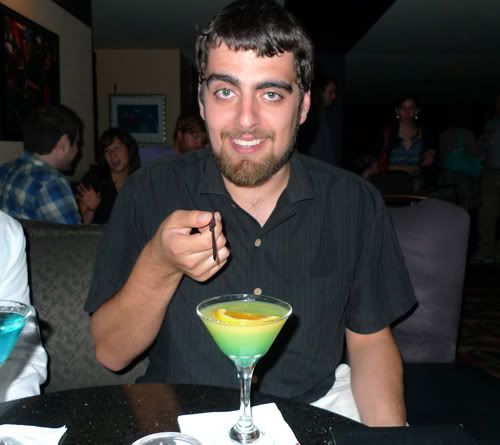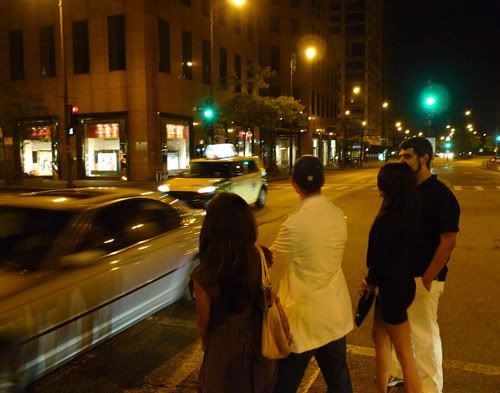Hello vascular world! The 2011 SVU Annual Conference has already ended, but I'm just now having time to relax and process the past few days.
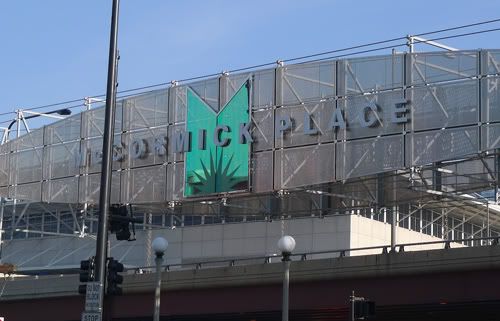
As people take the time to relax and recharge themselves for the incoming week, let's take a retrospective look at what happened on the 2nd day (June 17th) of the 2011 SVU Annual Conference.
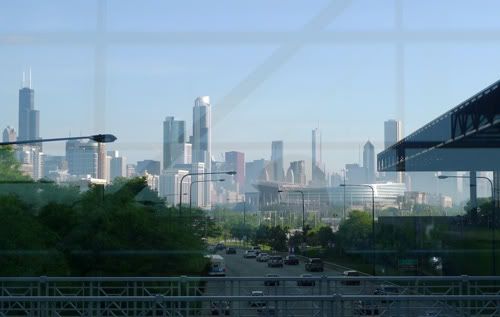 Fantastic 2nd Day at the 2011 SVU Annual Conference
Fantastic 2nd Day at the 2011 SVU Annual Conference
The 2nd day immediately started out great simply because the weather was great. No rain or wet puddles.
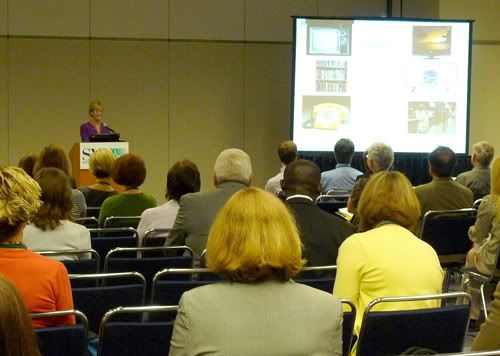
I went to the Friday Technical Show where many of the conference's sponsors were given the opportunity to highlight their latest and greatest to eager attendees. Some announcements included Carefusion's Sonora TCD system and Phillip's X6-1 Matrix transducer (which I got to play with last year in my Boston clinicals).

After the sponsor's talk, time was set aside to get some hands-on demonstrations.
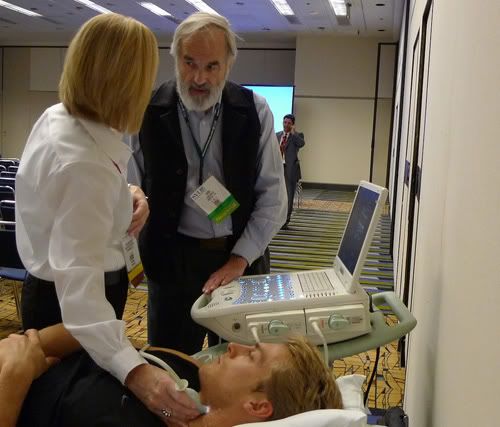
Esaote provided demonstrations of their My Lab 25 Gold portable ultrasound system, which apparently can fit into its own carry-on suitcase.
Another interesting thing I noticed at the technical showcase (and the Exhibit Hall upstairs) is that most of the models (the people being scanned) looked like actual models. I mean it felt as if after the conference these guys would be on a plane to Italy or New York to show off the latest in shorts, shoes, or whatever. Imagine putting this on a resume: professional ultrasound model-legs only.
This reminds me of story that David Amidei (manager at Zonare) told me. He once hired a huge guy to be one of their "A-List" ultrasound models. His nickname was "The Shadow". Maybe he was a heavily calcified model, I don't know. Anyways The Shadow was a pretty demanding model who traveled everywhere and wanted to be served chicken before and after every gig. They eventually had to let him go. But yes...what a fascinating life it would be to be a professional ultrasound model. Thanks David for that great story!
Next to Esaote were Phillips and Hokanson.
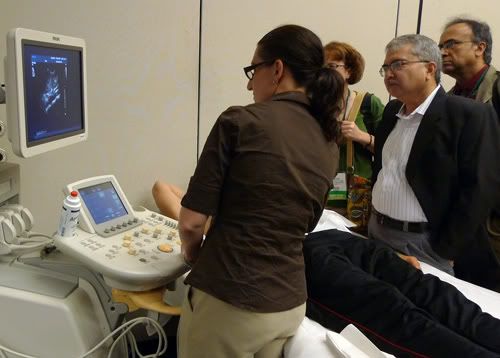
The CX50 compact ultrasound system, the Hokanson rapid cuff inflator, and the X6-1 Matrix transducer were being demonstrated. Doreen and Roseann from Phillips answered questions.
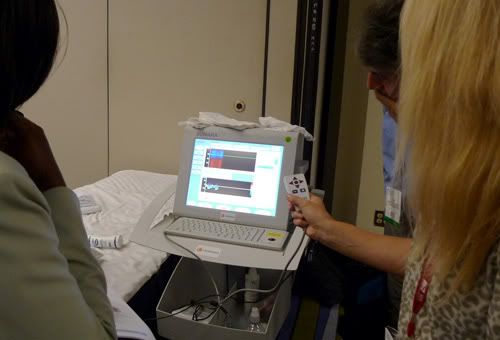
Carefusion was also nearby to demonstrate their Sonora TCD ultrasound system.

Next to Carefusion was GE Health Care. The device that caught my eye was a Venue 40, which Daniel and Jennifer from GE were demonstrating. The Venue 40 was designed to offer rapid and portable ultrasound imaging. It's not meant to replace traditional ultrasound systems, but provides a way for clinicians to do quick needle guidance and to view superficial structures quickly. It's also touch-based.
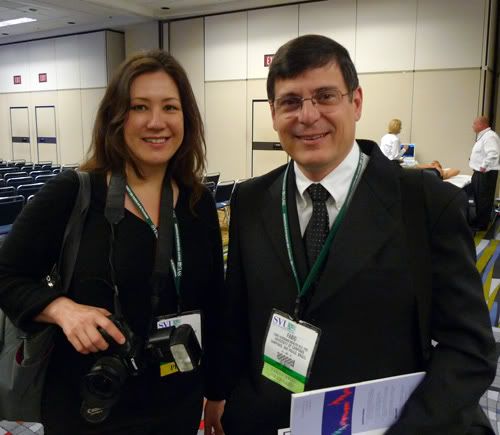 Sandy Kim from Boston and Dr. Fabio Menezes from Brazil.
Sandy Kim from Boston and Dr. Fabio Menezes from Brazil.
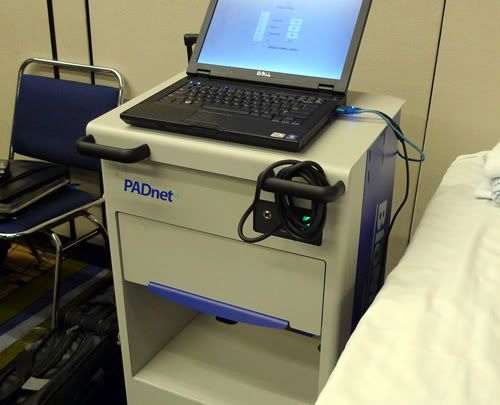
Another vendor was Biomedix. Elise and Aaron were nearby to answer questions. The PADnet+ is a system designed to provide lower extremity physiologic testing using segmental pressure cuffs and pulse volume recording data (so no CW doppler probe used).
Big thanks to GE Healthcare, Medstreaming, Biomedix, Philips, CareFusion, Hokanson, Esoate, and Surgidex for their sponsorship.
****
At around 8:20am the Technical Showcase ended and attendees were encourage to make their way to the main ballroom where the SVU General Session was about to begin.
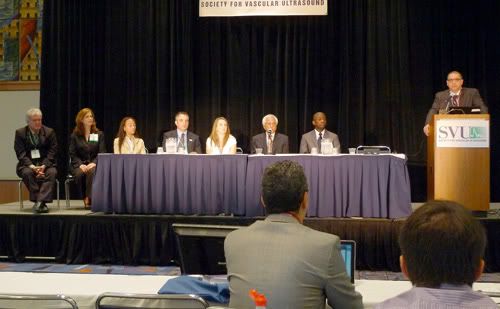
The SVU General Session began at 8:30am and was moderated by Dr. Steven Leer. I just have to say that Dr. Leer was extremely funny and his voice reminded me so much of TV anchor Tom Brokaw.
The presentations for the morning were really exciting. Some topics were controversial to some people and sparked lots of debate.
The session started when Dr. Almaroof presented a study comparing the use of duplex ultrasound and the use of CT to determine the proximal location of an endograft after surgery. He found a moderate correlation and his data suggested that ultrasound may be applicable for assessing endograft migration.
Dr. Fanilda Barros presented a study about the relationship between diameter and pelvic vein reflux. Renee Croft presented a case that questioned whether it was beneficial to do pre-operative vein mapping prior to surgical creation of arteriovenous fistula for dialysis.
Dr. Katherine Kane's presentation was of diagnosis and creation of a treatment plan of a rare posterior circumflex humeral artery aneurysm of a baseball player without the use of angiography. Dr. Kane made the case that future cases could be diagnosed using only a physical exam and duplex ultrasound. Another interesting point she made was that axillary aneurysms were rare and most cases seem to involve young athletes who used their arm for overhead-throwing activities.
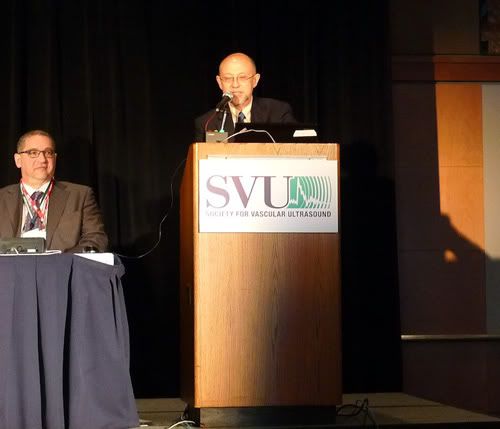
Dr. Fedor Lurie from Hawaii had a case about the variability of ultrasound assessment of venous reflux. Dr. Lurie couldn't really get into details because the case was going to be published in the Journal of Vascular Surgery. However, the statements he made were very important as he stressed that scientific studies involving vascular research needed to do a better job. He stated that reliability in vascular research was not being done well. He also made the point that there were no standard protocols in doing reflux studies. Everyone was doing it differently.
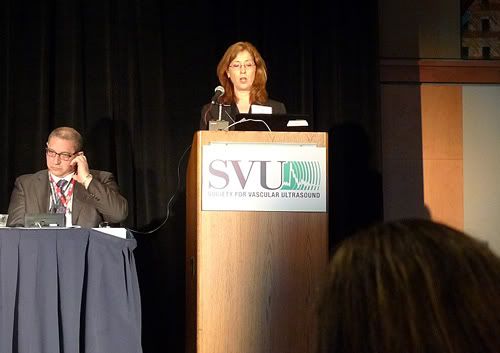
Lois A. Scheffler of Navix made a presentation in which her company, Navix, developed their own internship program for hiring new graduates. Before they created the internship program they were experiencing problems with retaining experienced staff and controlling hiring and training costs. They found a way to offer new grads a path into the ultrasound industry and become full-fledged professionals, but in a way that was cost effective for Navix.
I can understand where Navix was coming from, but I (and perhaps the graduates of Rush University's vascular ultrasound program and other dedicated vascular ultrasound schools) didn't exactly agree with Navix. The quality of ultrasound programs in the country can vary widely, but I assure Navix that they would have no problem hiring any of the graduates from Rush University.
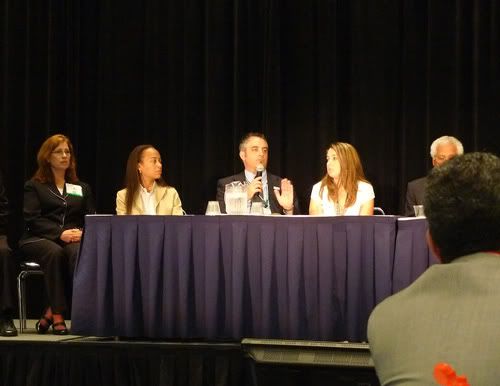
Perhaps the most controversial topic of the morning was wether to do a venous reflux study with the patient standing up vs reversed trendelenberg. There were two presentations about it (one by R. Patrick DeMuth and one by Dr. George A. Carty).
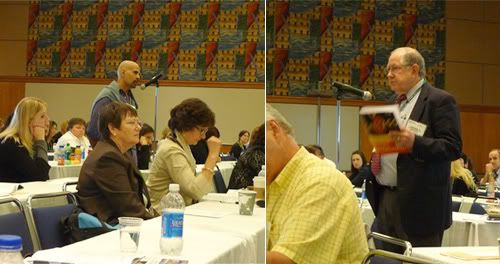
As the end of the session there were a lot of questions and several debates about the issue of standing vs reversed trendelenberg in reflux studies.
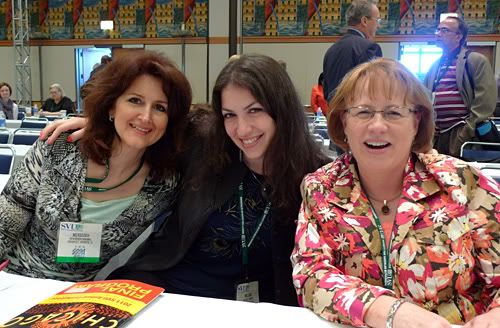
Yay, break time!
*****
At 10:30am clinical case study presentations was the next order of business (yah it was a packed morning).
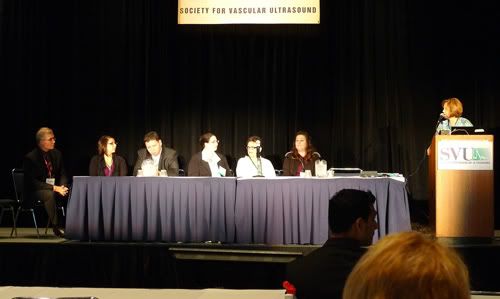
Chicago's own Donna Blackburn presented a case about an internal carotid occlusion in a newborn. Dr. Judith Cook talked a patient she treated who had both an AVF and a pseudoaneurysm in the right groin. Dr. Zsolt Garami talked about a case where a patient's extracranial/intracranial bypass was imaged without digital subtraction angiography by using combined CT and TCD imaging. Marisa Marzec presented a case about lower extremity bypass graft entrapment. Dr. Porreca presented a case in which amaurosis fugax was caused not by obstruction in the ophthalmic artery, but due to arterial steal. Dr. Porreca explained that retrograde flow was found in the ophthalmic artery. The last unique case was presented by Makenzie Seckora. Her case was about how ultrasound-guided ethanol injection was used to resolve an arteriovenous malformation found in a foot.
*****
At 11:20am the SVU Town Hall Meeting began.
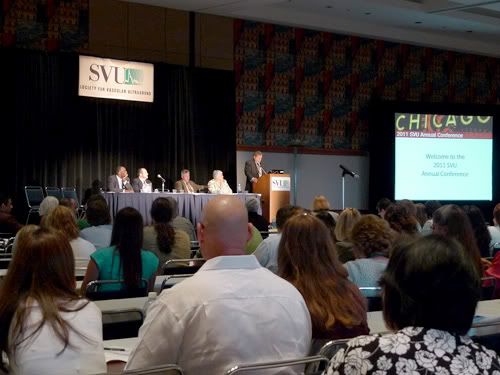
The basic information I got from the "State of the Society" presentation was that:
*SVU is doing pretty well.
*Membership is up.
*Increased number of SVU Signature Labs around the country.
*5 scholarships were given to students to pay for their trip to the conference.
*SVU had positive cash flow despite being a non-profit.
*Awareness of vascular ultrasound as a profession (among young people) is weak. Educating a younger generation about the profession and increasing the number of clinical sites is NEEDED.
*Only 45-50 out of 276 SVU student members attended the conference and the average age of the vascular sonographer is 52. We need more younger people to get involved in SVU and the profession itself.
*New York, Pennsylvania, Florida, California, and Texas have the highest number of SVU members (not ranked in any order).
*Need more mentors in SVU.
Comments from the audience:
*Employers need to understand that having a student interning at their lab is a GOOD thing. It's a unique opportunity for them to have a 6-9 month interview with a potential employee.
*Employers need to understand that vascular sonographers coming from bachelors programs have at least 1 year of clinical experience.
Announcements by representatives from ARDMS and CCI were also made. Both ARDMS and CCI announced that they were getting feedback by the community to create subspecialties within the RVT/RVS credentials. One sub-speciality offered by CCI is RPhS, which focuses on phlebology.
The SVU Town Hall Meeting concluded with the announcement of the 2011 SVU Fellows. It was noted that SVU Fellowship is not handed out easily and that considerable contribution to the profession must be made before being considered for fellowship.
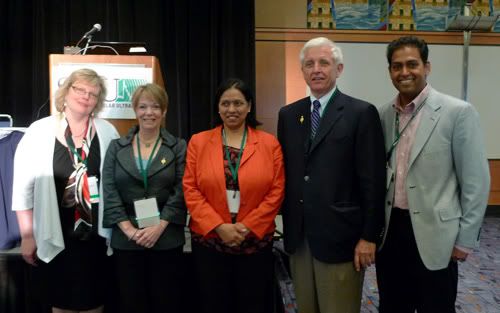
The new 2011 SVU fellows are:
Dr. Dennis Bandyk. Member since 1990.
Surinder Dhanjil from the United Kingdom. Member since 1996.
Vicky Kentucky. Member since 1999 and active RVT since 1991.
Megan Hodge. Nurse, graduate from Oregon Institute of Technology, and active board member.
Ajay Zachariah. Member since 1992.
YAY!!!
*****
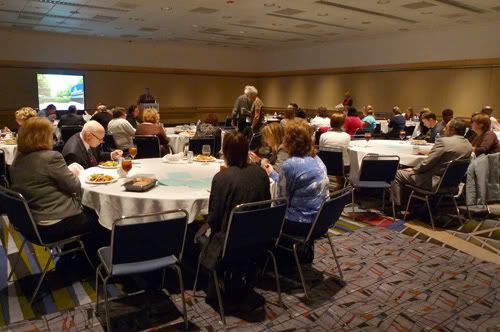
At 12:20pm the Lunch with the Experts series began with presentations by Ajay Zachariah, Kathy Ziegler, and Michael Schwebler.
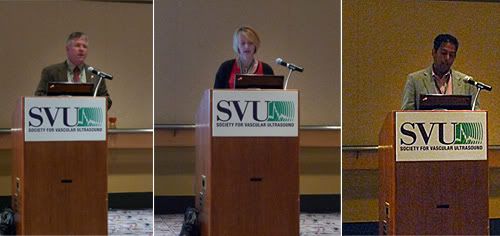
The focus of the presentation was lab management and the importance of customer service in the health care setting.
I used to work at Disney so the topic of customer service is very dear to me. The session was very informative and they really stressed the importance of communication skills and balancing life/work issues.
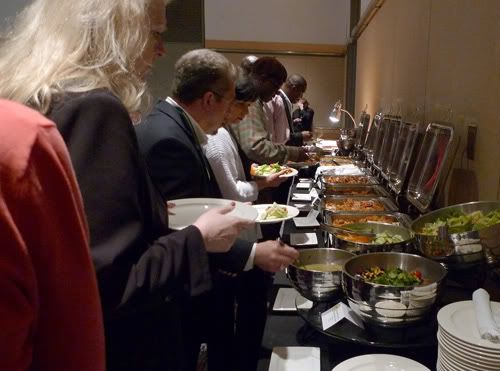
The food was also really amazing. The theme of the lunch was definitely Mexican food. There were delicious salads, steak and chicken fajitas, and enchiladas.
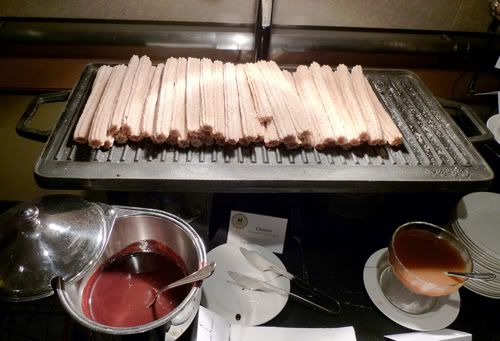
For dessert they had fresh churros (fried dough with cinnamon and sugar) served with chocolate and caramel sauce.
*****
At 1:30pm a joint session by SVS and SVU was conducted. The presentations were dedicated to venous studies.
Paul Heggerick made a presentation about the ultrasound's role in venous ablation. Dr. David Rigberg presented about whether a duplex study should done routinely after GSV ablation.
The Role of Ultrasound during Venous Ablation – Paula Heggerick, BS RDMS RVT RPhS. William Schroedter provided guidance on the imaging of perforators, accessory veins, and the small saphenous vein. Dr. Marc Passman presented about the use of ultrasound during IVC filter placement. And last but not least, Dr. Paul Armstrong talked about the used of venous duplex to determine the length of anticoagulation.
It seemed like the overall message of the SVS/SVU joint session was that ultrasound was inexpensive, noninvasive, wildly available, and offered differential diagnosis (all GREAT things!)
*****
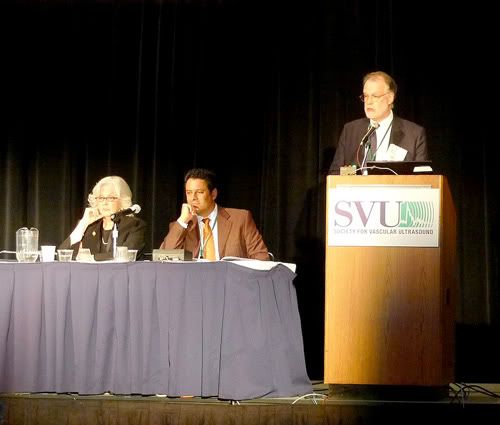
From 4:15pm-5:30pm an important SVS/SVU joint session about the status of government legislation took place.
*****
Friday was really a long, but productive day. Thankfully it was really nice outside which encouraged alot of people to go out and have fun.
More on that later,
Manny :)
